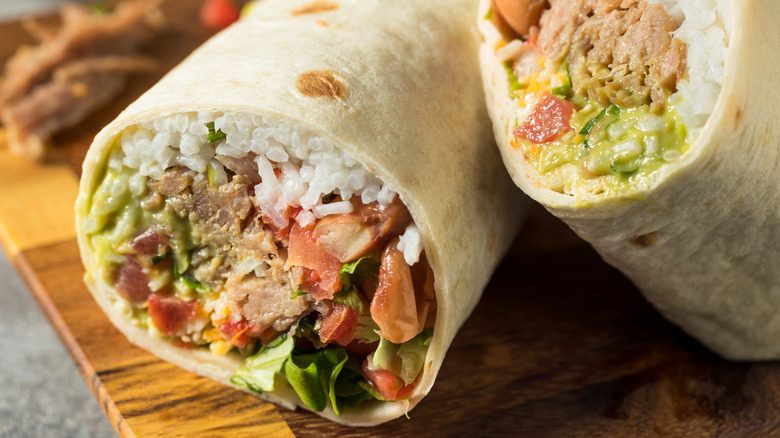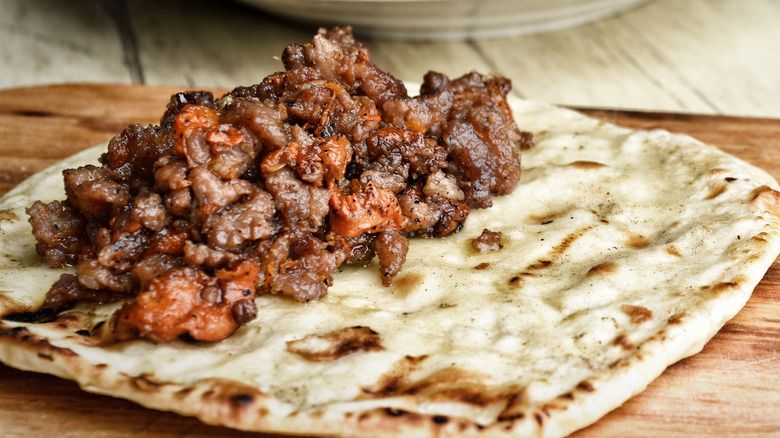How Modern-Day Burritos Differ From The Original
Just like their cousin, the taco, burritos are adaptable to every taste and appetite. You can go to a restaurant and order a supersized burrito with traditional beans and ground beef, or a more modern version with plant-based meat and organic salsa. Whether served with melted cheese draped across the bundle of yumminess with hot sauce sprinkled on it or eaten without, the burrito is a hearty meal. The burrito can be found on chain restaurant menus and on small family-owned restaurant menus, too. But how did this craveable hand-held meal get invented? And how has it evolved over the years?
The name burrito means "little donkey" in Spanish, according to Home Perch, but how it got that name is not known. Some people theorize the name refers to the burrito's similarity to a donkey's ear, or to a bedroll that a donkey would carry for its owner. What we do know is that burritos first became widely popular in California. Home Perch cites burritos as first appearing on a restaurant menu in Los Angeles in the 1930s. However, Peter Fox for The Washington Post wrote that the first places to sell burritos in San Francisco were La Cumbre and El Faro in the 1960s. The burrito that was being served in the mid-20th century were inspired by burritos in Mexico — but they would hardly be recognizable to today's burrito enthusiasts in the United States.
A simpler burrito
Restaurante del Bol Corona is reportedly the oldest maker of burritos in Tijuana, Mexico, according to The Washington Post. The restaurant is still in operation and serves only burritos. However, these classics look very different from what you'd find on a dinner plate in San Francisco or Los Angeles (or anywhere else for that matter). Fox describes the Tijuana burritos as about half the size of the ones found in the United States. They are much simpler, containing just one or two ingredients, as well as folded differently. These burritos come with different kinds of meat, from carne asada to lobster. The additions that Americans have grown accustomed to (guacamole, rice, and sour cream) are nowhere to be found.
Vice describes the original burrito in Mexico as being filled with braised meat, salsa, and a thin layer of beans wrapped in a toasted flour tortilla. This is in stark contrast to the burritos found on restaurant menus, such as Chipotle, which offers five different kinds of meat (plus a plant-based meat option or a vegetable filling) — as well as a choice of rice and beans, plus toppings that include guacamole, four kinds of salsa, sour cream, fajita veggies, cheese, romaine lettuce, and queso blanco.
In recent years, frozen burritos, as well as breakfast and sushi burritos have gained in popularity, getting even further away from the burrito first made in northern Mexico. It shows just how varied the much-loved food has become north of the border.

